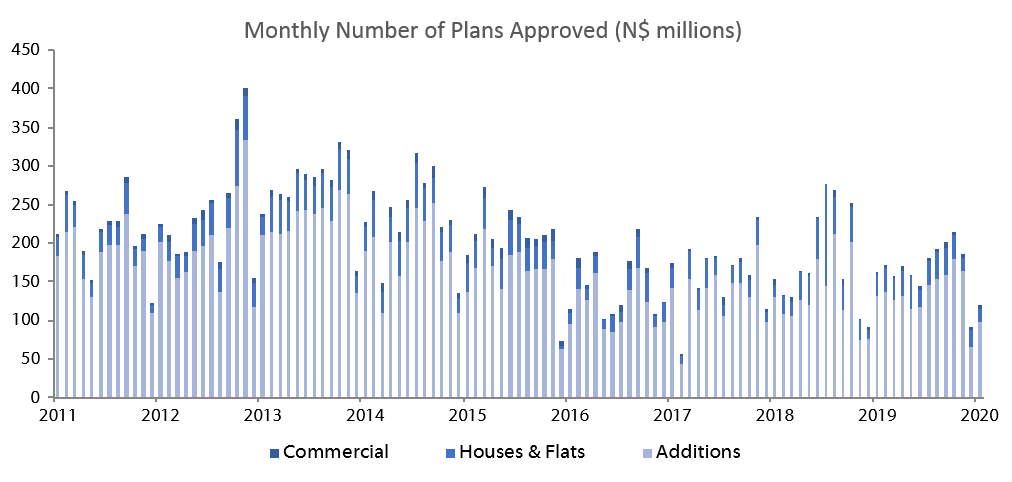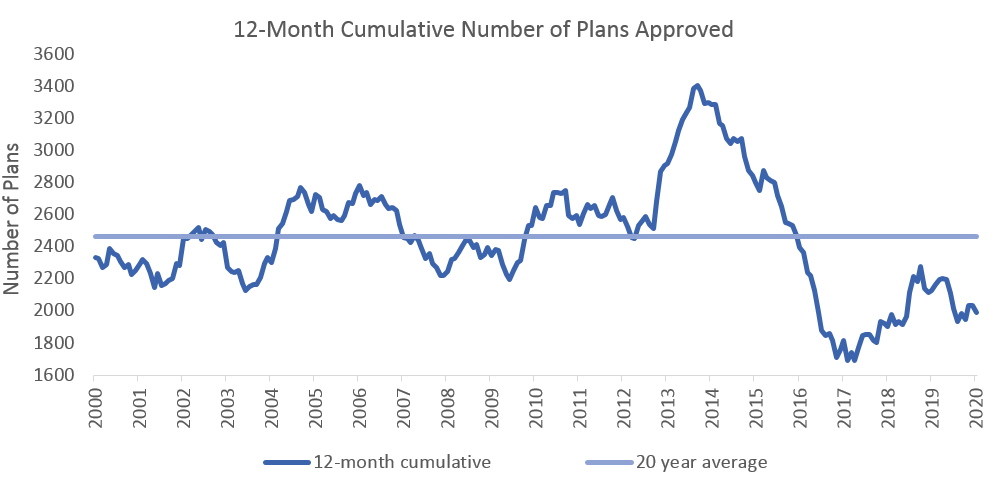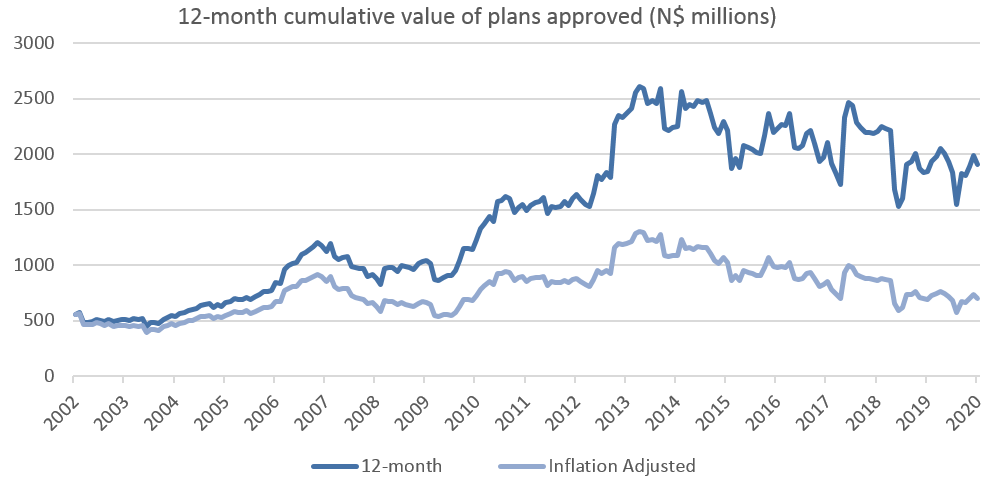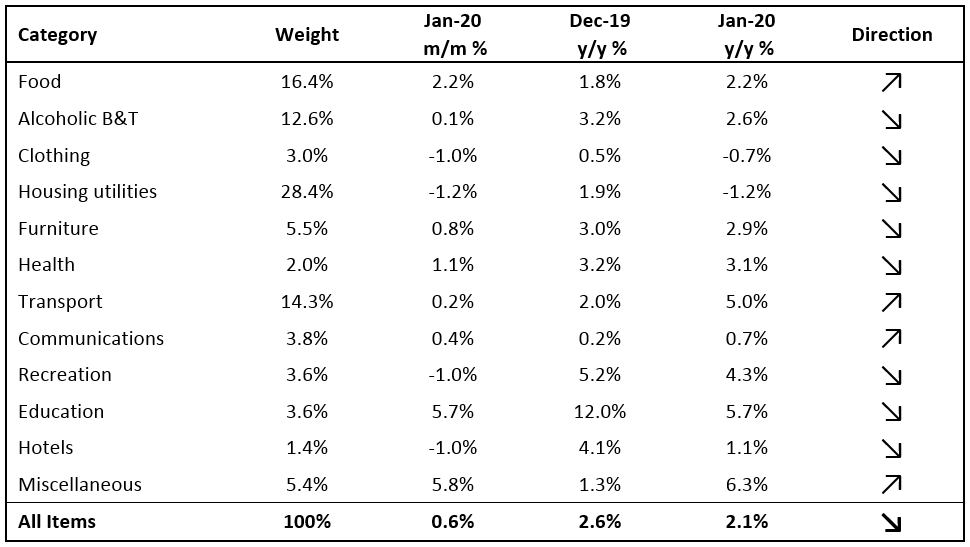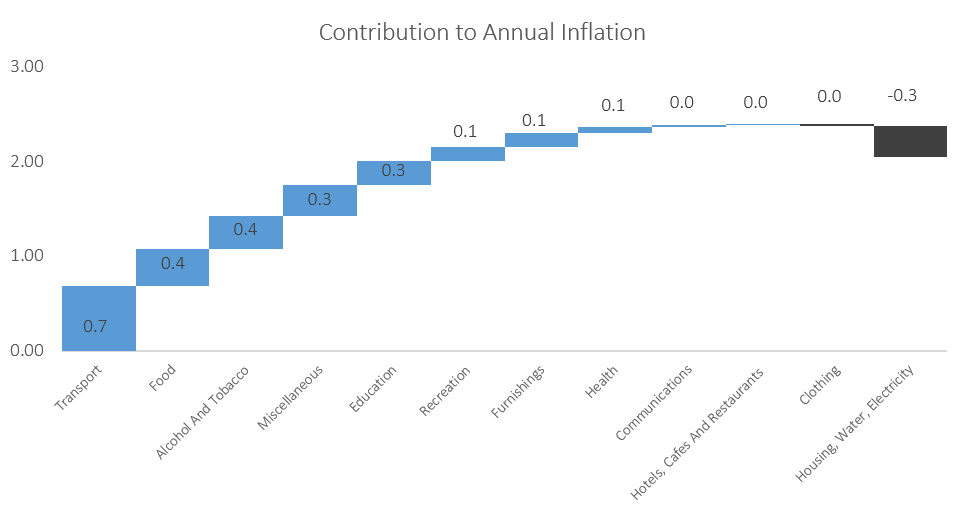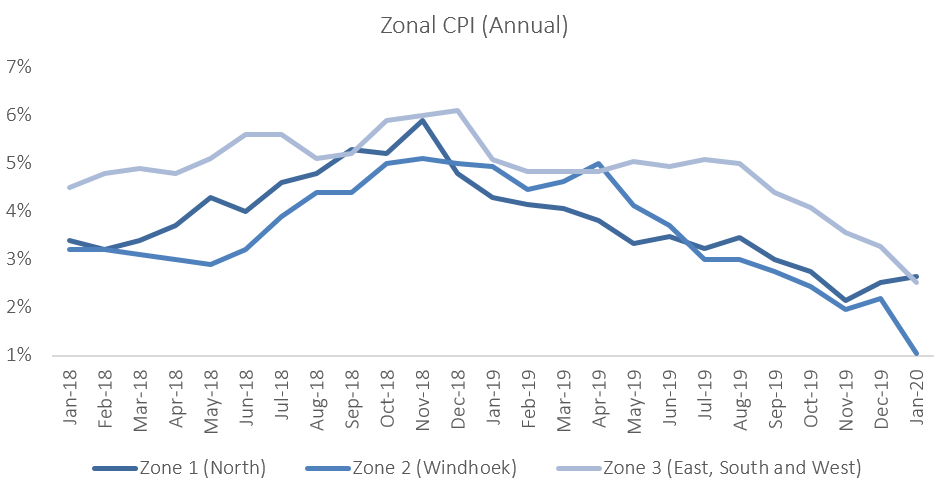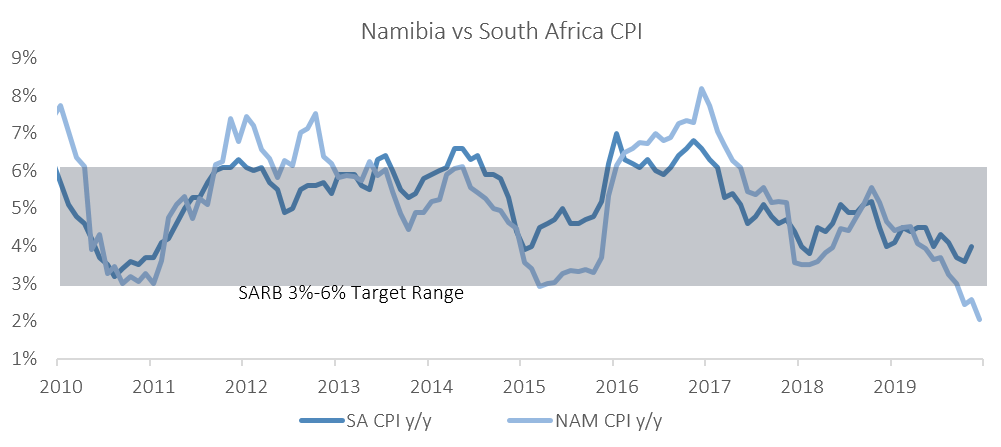
Overall
Private sector credit (PSCE) increased by N$304.6 million or 0.3% m/m in January, bringing the cumulative credit outstanding to N$104.0 billion. On a year-on-year basis, private sector credit grew by 7.0% y/y in January, on par with December’s increase of 6.9% y/y. Cumulative credit extended to the private sector over the last 12-months amounted to N$6.77 billion. Of this cumulative issuance, individuals took up N$3.9 billion worth of debt while N$3.1 billion was extended to businesses. The non-resident private sector decreased their borrowings by N$200.6 million.

Credit Extension to Individuals
Credit extended to individuals increased by 7.0% y/y in January, compared to 7.2% y/y recorded in December. On a monthly basis, household credit decreased by 4.4%. This relatively large decline seems to be due to individuals paying back overdrafts during the month, resulting in an 18.1% m/m decrease in this category. There has been a corresponding jump in the overdrafts and other loans and advances categories for businesses which suggests a reclassification between individuals and businesses. The ‘Other loans and advances’ to individuals category recorded a decline of 13.3% m/m, while the same category for corporates jumped by 17.8% during the month. Installment credit increased by 2.5% m/m, while mortgage loans extended to individuals decreased by 2.7% m/m.

Credit Extension to Corporates
Credit extension to corporates grew by 7.5% y/y in January, rising at a quicker rate than the 7.1% y/y increase recorded in December. On a month-on-month basis, credit extension to corporates rose 7.3% in January, the highest monthly increase since January 2007. Most of this stemmed from a substantial 17.8% m/m increase in ‘other loans and advances’ and a 10.0% m/m increase in overdraft facilities extended to corporates, which is likely due to a reclassification as noted above. Mortgage loans to corporates also saw a sizeable increase of 8.9% m/m. Leasing transactions to corporations increased by 51.0% m/m, although this is from a low base.

Banking Sector Liquidity
The overall liquidity position of commercial banks deteriorated further during January, declining by N$935.0 million to reach an average of N$47.7 million. According to the Bank of Namibia, the decline is a result of seasonal factors following a decrease in cash balances from the banking system over the festive season, as well as commercial banks’ accumulated long positions in liquid assets. The low liquidity position has meant that commercial banks had to utilize the BoN’s repo facility, with the balance of repo’s outstanding increasing from N$1.75 billion at the start of January to N$2.04 billion at the end of the month.

Reserves and Money Supply
Broad money supply rose by N$11.0 billion or 10.6% y/y in January, as per the BoN’s latest monetary statistics release. Foreign reserve balances rose by 7.3% m/m to N$31.0 billion in January. The BoN attributed the increase to the inflow of SACU receipts during the period.

Outlook
Overall PSCE growth in January was very much in line with the growth seen in December on a year-on-year basis, increasing by 7.0%. Rolling 12-month private sector credit issuance is up 1.2% to N$6.8 billion as at the end of January 2019, with individuals taking up most (56.9%) of the credit extended over the past 12 months.
The BoN’s MPC unsurprisingly followed the SARB’s MPC decision to cut the repo rate by 25-basis points at its meeting in February. While this should provide some relief to heavily indebted consumers, we don’t anticipate that further accommodative monetary policy will be effective in stimulating economic activity to the extent that it reverses the current low growth trend.
January’s PSCE data shows that businesses continue to be dependent on short-term debt, particularly in the form of overdrafts and credit card debt. Businesses’ reliance on short-term debt is concerning, but not unexpected, given the fact that Namibia remains in an economic slump. While we do believe that there will be marginal economic growth in 2020, it will largely be due to base effects and not a significant improvement in economic conditions. Businesses and consumers are thus expected to continue to rely on short-term debt as a means of making ends meet for as long as economic conditions remain challenging.



